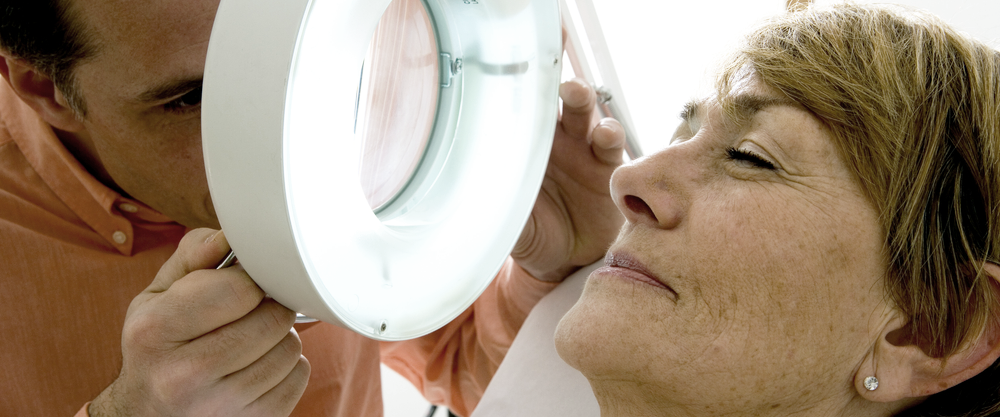Skin cancer is the most common form of cancer in the United States, affecting more than 3 million Americans every year, according to the American Cancer Society (ACS). When found early, skin cancer is one of the easiest cancers to cure, but left unchecked, it could lead to dire outcomes.
The most deadly type of skin cancer—melanoma—is also the least common, making up about 1% of all skin cancer cases, according to the ACS. Melanoma tumors often appear brown or black, but sometimes look pink, tan or white. This cancer typically originates differently in men and women—often beginning on men’s chests or backs and women’s legs—but it can start anywhere. Light skin, family history or a previous diagnosis of melanoma contribute to increased risk.
Although melanoma accounts for more deaths, basal cell carcinoma (BCC) and squamous cell carcinoma (SCC) occur more frequently and carry equally negative prognoses if not treated early. BCC is usually caused by ultraviolet (UV) exposure and typically looks like scars, shiny bumps, open sores, red patches or pink growths, according to the Skin Cancer Foundation. Unlike melanoma, BCC does not commonly metastasize or spread, from the original cancer site to other areas of the body. The Skin Cancer Foundation reports that an estimated 4.3 million cases of BCC are reported annually, making it the most common form of skin cancer.
SCC often develop on areas of the body frequently exposed to the sun but may originate anywhere, including the genitals or mucous membranes. Often, SCC looks like elevated growths with an indention in the middle, open sores, scaly red patches or warts, all of which may crust or bleed, according to the Skin Cancer Foundation. Out of the estimated, 1 million cases of SCC reported annually, almost 15,000 results in death.
Many forms of treatment, including surgery, chemotherapy, immunotherapy, radiation therapy, surgery, targeted therapy, radiation, cryosurgery, topical medications and laser surgery, can be initiated depending on the type and stage of cancer.
Prevention Is the Best Medicine
A number of easy precautionary steps will help you reduce risk of skin cancer. Protecting yourself from the sun is the single best defense against skin cancer. Remember these simple things you can do to safely enjoy sun exposure:
- Wear dark-colored clothes. Darker colors help block the sun’s ultraviolet UV rays. The ACS recommends hats with a 2- to 3-inch brim around the hat’s circumferences to protect ears and necks.
- Use appropriate types and liberal amounts of sunscreen. Apply a handful of broad-spectrum sunscreen with sun protection factor (SPF) of at least 15 to cover your arms, face, neck and legs, reapplying every two hours or immediately after swimming or sweating.
- Don’t be fooled into thinking cloud cover protects you. The sun’s rays are strongest between 10 a.m. and 4 p.m., and UV rays penetrate clouds. The ACS suggests the shadow test: if you’re taller than your shadow, the sun’s rays are at their peak, so take the proper precautions.
- Don’t use tanning beds. Tanning beds emit UV rays and have been linked to increased melanoma risk.
Sources:
